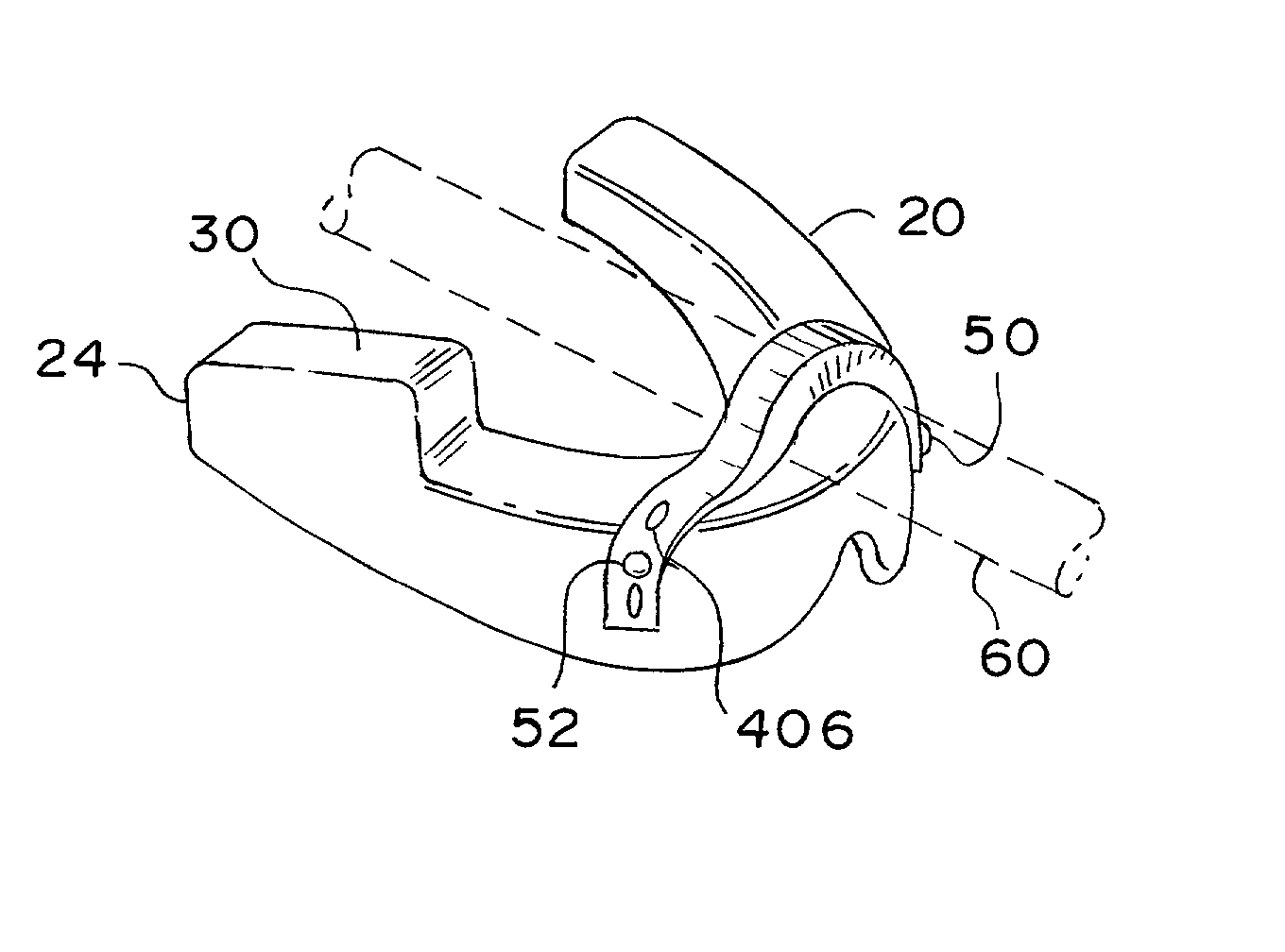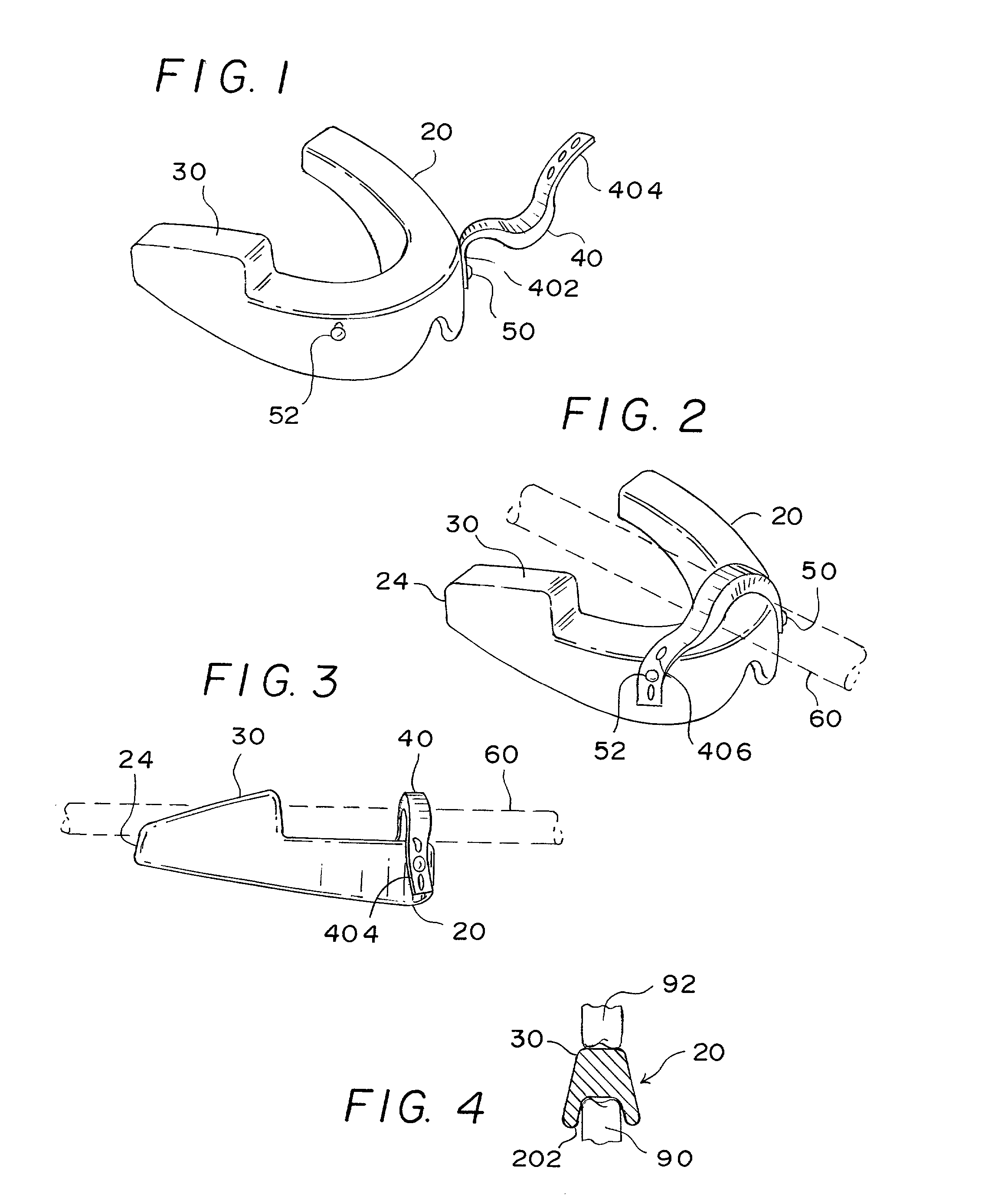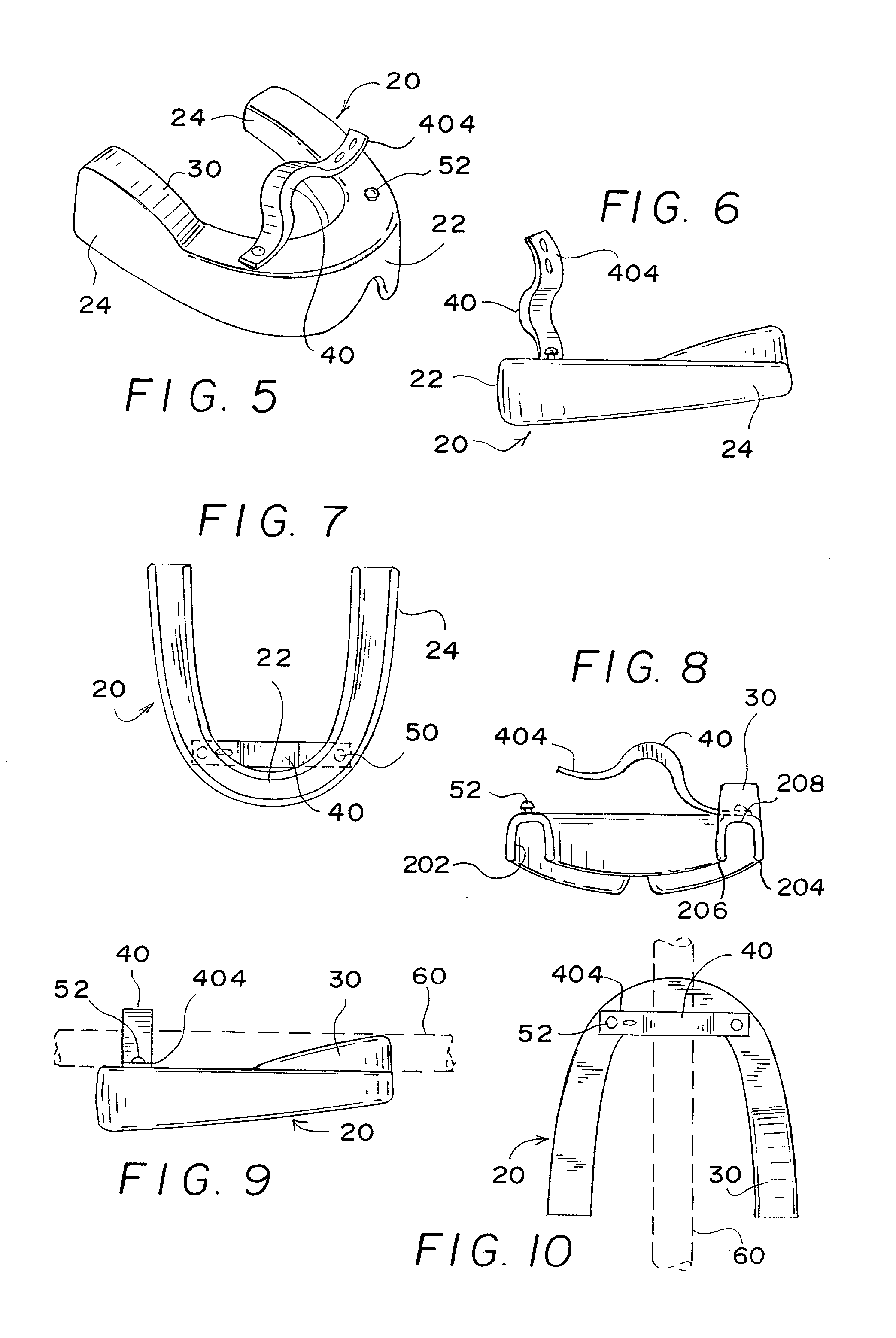Catheter securing device
a technology for securing devices and catheters, applied in the field of catheter securing devices, can solve the problems of difficulty in properly securing catheters to the patient's face to prevent these events, hindering jugular vein flow or impeded line placement within the patient, and ineffective tapes and adhesives routinely, so as to achieve efficient and effective securing of catheters, simple design, and quick and easy adjustment of depth
- Summary
- Abstract
- Description
- Claims
- Application Information
AI Technical Summary
Benefits of technology
Problems solved by technology
Method used
Image
Examples
Embodiment Construction
[0045] A preferred embodiment of a securing device according to the present invention will be described with reference to FIGS. 1-10. The invention preferably includes a guard 20, a wedge 30, and a latch 40 as illustrated in FIGS. 1-10.
[0046] The guard (or teeth protecting means) 20 preferably is shaped to fit over at least a portion of the lower teeth of a patient and more preferably all of the lower teeth of the patient while not restraining the tongue. Alternatively, the guard 20 may be used to fit over the upper teeth of the patient. The guard 20 preferably is generally U-shaped as shown, for example, in FIGS. 1 and 5 with an anterior region 22 and two posterior regions 24. The posterior regions 24 preferably are formed to track the general shape of the patient's jaw. As illustrated in FIGS. 4 and 8, the guard 20 preferably has a generally U-shaped transverse cross-section so as to define a channel 202 extending over its entire length for shrouding or covering the lower teeth 90...
PUM
 Login to View More
Login to View More Abstract
Description
Claims
Application Information
 Login to View More
Login to View More - R&D
- Intellectual Property
- Life Sciences
- Materials
- Tech Scout
- Unparalleled Data Quality
- Higher Quality Content
- 60% Fewer Hallucinations
Browse by: Latest US Patents, China's latest patents, Technical Efficacy Thesaurus, Application Domain, Technology Topic, Popular Technical Reports.
© 2025 PatSnap. All rights reserved.Legal|Privacy policy|Modern Slavery Act Transparency Statement|Sitemap|About US| Contact US: help@patsnap.com



